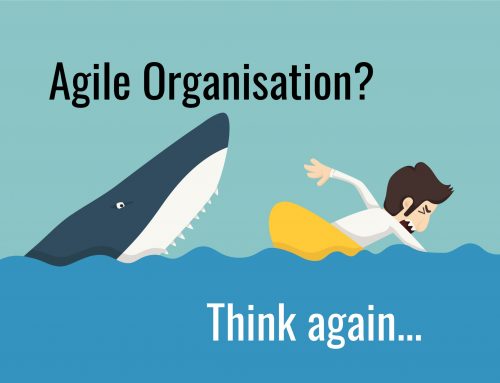2021/04/20
In my observation, the power and effectiveness of financial management is grasped and understood by few executives. There are executives who do not know the most basic contexts, terms and contents of financial management [1]. In contrast, it can be stated: Liquidity, profitability and return on investment – the three core elements of financial management – together with compliance form essential supporting pillars for a functioning management. To put it even more bluntly, without a deep and profound understanding of financial management as well as the most relevant compliance topics, functioning management tools are ineffective or at least significantly weakened in their impact. Here is a brief insight into why this is so.
- Any action by people and/or organizations almost inevitably leads to cash transactions. Liquidity means being able to meet one’s financial obligations at any point in time. The best case is when the amount of incoming payments exceeds the amount of outgoing payments and one can expect to be able to generate a positive cash flow in the medium term. The most effective and most widely used tool for this is liquidity planning, which is done at least monthly, better still weekly and in some cases even daily. [2]
- At least once a year, you should draw a conclusion and ask yourself whether what you have done was profitable. In other words, did you make a profit on the bottom line for all your activities (= profitability). The important question is: Did you succeed in not only making a short-term profit from your activities or – which is always better: Did you leave or create the foundations to be able to make a profit in the future as well? The best known and most important instrument for this is the contribution margin calculation, i.e.: What remains in profitable coverage after deduction of all (!) costs (incl. taxes, depreciation, interest, etc.). Contribution margin accounting should always be possible on several levels: product, assortment, project and segment level, to name just a few possible dimensions.
- In the long term, liquidity and profitability are of no use if trading does not also promise Profitability means a minimum return on the capital employed, regardless of whether it is equity or debt capital. Every investor expects (rightly! ) – at the latest after a certain period of time – an adequate (!) return on his invested capital. The most important instruments for assessing profitability are pre- and post-investment calculations as well as profitability calculations based on business management reports (also known as BWA) or balance sheets. In the case of the latter in particular, however, the actual accounting policy background of the management should be as transparent as possible.
- Only if all three core areas of financial management, liquidity, profitability and return on investment, are managed equally will there be a realistic possibility of remaining in business in the future. In other words: Financial management with its core elements of liquidity, profitability and return on investment form the basis for an organization’s current and future potential for success in the short and/or long term[3] .
- Any financial management must be in the context of the corresponding compliance requirements. Whereas in the past the unspoken rule of the honorable businessman[4] applied and sufficed, today a multitude of spoken rules, standards and laws must be complied with in order to remain in business today and tomorrow. In particular, the core processes
- Purchase-to-Pay (P2P),
- Order-to-Cash (O2C),
- Trade Compliance,
- Tax Compliance,
- Fair competition
- and, if applicable, other supporting compliance processes
to keep an eye on. This is not just about management liability issues. Rather, it is about honesty, integrity and maintaining a good reputation or image in the business environment.[5] The most important instrument for a compliant organization is a compliance management system, which is regularly worked on in harmony or in joint connection with the risk management system.
Those who see financial management and compliance as business enablers rather than business preventers will be able to use their tasks and tools as managers effectively(er) with these tools.
And there is another positive side effect. In the future, you will remain in business, especially if you have to fulfill regulatory requirements, such as maintaining your status as an “authorized economic operator”. This European status, which has been gaining more and more ground since 2005, will have a massive impact on economic cooperation in the future – in addition to many other regulations – which should be reason enough to take a serious look at effective financial management and compliance.
[1] and some are even proud of it. This is my experience from more than 15 years of training and educating managers of all kinds.
[2] Cash flow and cash flow balance calculations can also be helpful, but usually this is only crucial and necessary for companies of a corresponding size.
[3] A concise summary and further information in: Griesbeck, Markus. Management. The essence. Handelsblatt Fachmedien Verlag. 2019. S. 73-96.
[4] Cf. e.g. For example, the time-honored merchant’s saying: “Ehr’ is Dwang gnog” (Honor is compulsion enough).
[5] Further information in: Griesbeck, Markus. Management. The Essence. S. 53-72.





